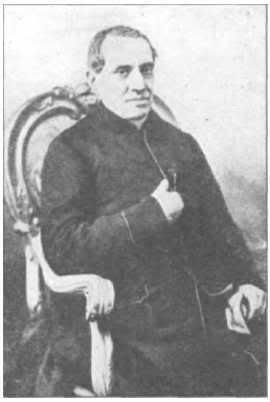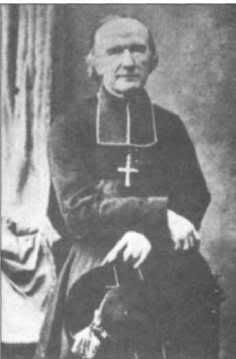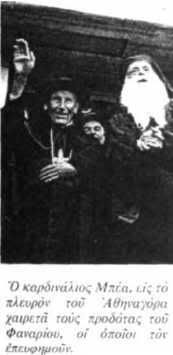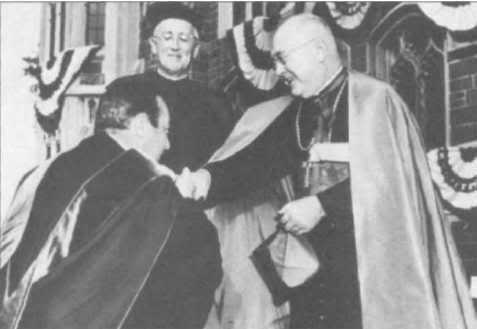Field Marshall Harold Rupert Leofric George Alexander, 1st Earl Alexander of Tunis - Commander-in-Chief o/t forces i/t Middle East 1942; Commander-in-Chief of Italy 1943-1944; Supreme Allied Commander o/t Mediterranean 1944-1945






| QUOTE |
| Field Marshal Harold Rupert Leofric George Alexander, 1st Earl Alexander of Tunis, 1st Viscount Alexander of Tunis, 1st Baron Rideau PC (Can) PC (UK) KG OM GCB GCMG CSI DSO MC LM DSM (10 December 1891 - 16 June 1969) was a British military commander and field marshal, notably during the Second World War as the commander of the 15th Army Group. He later served as the last British Governor General of Canada. Earl Alexander of Tunis is a title in the Peerage of the United Kingdom. It was created on 14 March 1952 for the prominent military commander Field Marshal Harold Alexander, 1st Viscount Alexander of Tunis. He had already been created Viscount Alexander of Tunis, of Errigal in the County of Donegal, on 1 March 1946, and was made Baron Rideau, of Ottawa and of Castle Derg in the County of Tyrone, at the same time he was given the earldom. These titles are also in the Peerage of the United Kingdom. Alexander was the third son of James Alexander, 4th Earl of Caledon. He was succeeded by his eldest son, the second and (as of 2007) present holder of the titles. He briefly served as a Lord-in-Waiting (government whip in the House of Lords) under Edward Heath from January to March 1974. However, he lost his seat in the House of Lords after the passing of the House of Lords Act 1999. As a descendant of the fourth Earl of Caledon Lord Alexander of Tunis is also in remainder to this peerage and its subsidiary titles. From 1980 to 1990 he was in fact heir presumptive to these titles, before the birth of the current Earl of Caledon's son and heir, Viscount Alexander. Background and family The third son of the 4th Earl of Caledon and the former Lady Elizabeth Graham-Toler, a daughter of the 3rd Earl of Norbury, he was born in London and educated at Harrow School and the Royal Military Academy Sandhurst. Alexander was the 11th batsman in the famous Fowler Match between Eton and Harrow in 1910.[2] In 1931, Alexander married Lady Margaret Diana Bingham, GBE DStJ, younger daughter of George Bingham, 5th Earl of Lucan. The couple had two sons and two daughters (of which, one was an adopted daughter). Early career He was commissioned into the Irish Guards in 1911. During the First World War, Alexander's battalion formed a part of the original British Expeditionary Force (BEF), in which he was a 22-year-old lieutenant and platoon commander. Alexander became the youngest lieutenant-colonel in the British Army during the war, and when the Great War ended he was in temporary command of a brigade. He served on the Western Front and was wounded twice in four years of fighting. He received the Military Cross in 1915, the Distinguished Service Order in 1916, and the Legion of Honour, and by 1918 was an acting brigadier. Rudyard Kipling, who wrote a history of the Irish Guards in which his own son fought and was killed, noted that, "It is undeniable that Colonel Alexander had the gift of handling the men on the lines to which they most readily responded . . . his subordinates loved him, even when he fell upon them blisteringly for their shortcomings; and his men were all his own." In 1919 - 1920 Alexander led the Baltic German Landeswehr in the Latvian War of Independence, commanding units loyal to the Republic of Latvia in the successful drive to eject the Bolsheviks from Latgale[3]. He later served in Turkey and Gibraltar before returning to England and the Staff College, Camberley and the Imperial Defence College. In 1937 he was promoted to major-general. World War II Alexander joined the British Expeditionary Force (BEF), as commander of the 1st Infantry Division, in France in 1939. He was instrumental in leading the retreat of the BEF to Dunkirk, and was the last man in his command to leave [4]. For the rest of 1940 and 1941 he held commands equivalent to corps and then army in mainland Britain, before being sent to Burma, commanding what was later to be the Fourteenth Army at the beginning of that campaign. In August 1942 Winston Churchill sent him, as Commander-in-Chief Middle East, and under him Lieutenant-General Bernard Montgomery as General Officer Commanding Eighth Army, to North Africa to replace General Claude Auchinleck who had held both positions. He presided over Montgomery's victory at the Second Battle of El Alamein. After the Anglo-American forces from Torch and the Eighth Army met in Tunisia in January 1943, he became deputy to Dwight Eisenhower, the Supreme Allied Commander in the Mediterranean. Alexander was very popular with both US and British officers, and was Eisenhower's preference for the ground command of D-Day, but Field Marshal Alan Brooke applied pressure to keep him in Italy, considering him unfit for the assignment. Alexander remained in Italy as commander of the 15th Army Group, with the US Fifth Army and British Eighth Army under his command. Montgomery, who was both a long-time friend and subordinate of Alexander in Sicily and Italy, said of him, "Alexander....is not a strong commander...the higher art of war is quite beyond him."[citation needed] He advised his US counterparts, Mark Clark and George S. Patton, to ignore any orders from Alexander with which they did not agree.[citation needed] In 1943 the Prime Minister,Winston Churchill, proposed to make the Irish aristocrat Alexander a Knight in the Most Illustrious Order of Saint Patrick. The Commonwealth Office advised against it and Alexander was made a Viscount in the Peerage of the United Kingdom instead. His forces captured Rome in June 1944, thereby achieving one of the strategic goals of the Italian campaign. However, US Fifth Army forces at Anzio, under Clark's orders, failed to follow their original breakout plan that would have trapped the German forces escaping northwards. At the end of 1944 Alexander was promoted to field marshal, his promotion being backdated to the fall of Rome, on 4 June 1944, so that he would once again become senior to Montgomery, who had been made a field marshal earlier in the year, on 1 September 1944, after the end of the Battle of Normandy. Alexander received the German surrender in Italy on 29 April 1945. Post-war Sir Harold Alexander was created Viscount Alexander of Tunis, of Errigal in the County of Donegal, in 1946 for his leadership in North Africa and Italy. In December 1946 he was made a Knight of the Garter and was created Baron Rideau, of Ottawa and of Castle Derg in the County of Tyrone, and Earl Alexander of Tunis in 1952. |
| QUOTE |
| Field Marshal Rt. Hon. Sir Harold Rupert Leofic George Alexander, 1st Earl Alexander of Tunis1 M, #41704, b. 10 December 1891, d. 16 June 1969 Field Marshal Rt. Hon. Sir Harold Rupert Leofic George Alexander, 1st Earl Alexander of Tunis was born on 10 December 1891.1 He was the son of Major Sir James Alexander, 4th Earl of Caledon and Lady Elizabeth Graham Graham-Toler.2 He married Lady Margaret Bingham, daughter of George Charles Bingham, 5th Earl of Lucan and Violet Sylvia Blanche Clay, on 14 October 1931.1 He died on 16 June 1969 at age 77.2 Field Marshal Rt. Hon. Sir Harold Rupert Leofic George Alexander, 1st Earl Alexander of Tunis was educated at Harrow School, Harrow on the Hill, London, England.1 He was educated at Royal Military College, Sandhurst, Berkshire, England.1 He fought in the First World War, where he was wounded three times and mentioned in despatches five times.1 He was decorated with the Legion of Honour.1 He was decorated with the Military Cross (M.C.).1 He was decorated with the Companion, Distinguished Service Order (D.S.O.).1 He was Temporary Brigadier and Brigade-Commander of the Indian Army in 1934.1 He was Commander of the Nowshera Brigade between 1934 and 1938 at India.1 He held the office of Aide-de-Camp to HM King Edward VIII in 1936.1 He was invested as a Companion, Order of the Star of India (C.S.I.) in 1936.1 He gained the rank of Major-General in 1937.1 He gained the rank of Colonel in 1937 in the service of the 3rd Battalion, 2nd Punjab Regiment.1 He was invested as a Companion, Order of the Bath (C.B.) in 1938.1 He was Commander of the 1st Division, Aldershot between 1938 and 1940.1 He was General Officer in Command of the Southern Command between 1940 and 1942.1 He was invested as a Knight Grand Cross, Order of the Bath (G.C.B.) in 1942.1 He gained the rank of General in 1942.1 He was Commander-in-Chief of the forces in the Middle East in 1942.1 He was General Officer in Command of the forces in Burma in 1942.1 He was Deputy Commander-in-Chief of the forces in North Africa in 1943.1 He was Commander-in-Chief of the Italy between 1943 and 1944.1 He was Supreme Allied Commander of the Mediterranean between 1944 and 1945.1 He held the office of Aide-de-Camp General to HM King George VI between 1944 and 1946.1 He was invested as a Knight, Order of the Garter (K.G.) in 1946.1 He was invested as a Knight Grand Cross, Order of St. Michael and St. George (G.C.M.G.) in 1946.1 He held the office of Governor-General and Commander-in-Chief of Canada between 1946 and 1952.1 He was created 1st Viscount Alexander of Tunis, of Errigal, co. Donegal [U.K.] on 1 March 1946.1 He adopted Lady Susan Mary Alexander. He was invested as a Privy Counsellor (P.C.) in 1952.1 He was invested as a Privy Counsellor (P.C.) [Canada] in 1952.1 He held the office of Minister of Defence between 1952 and 1954.1 He was created 1st Earl Alexander of Tunis [U.K.] on 14 March 1952.1 He was created 1st Baron Rideau, of Ottawa and of Castle Derg, co. Tyrone [U.K.] on 14 March 1952.1 He held the office of Lord-Lieutenant of the County of London between 1957 and 1965.1 He was decorated with the Order of Merit (O.M.) in 1959.1 He held the office of Constable of the Tower of London between 1960 and 1965.1 He held the office of Lord-Lieutenant of Greater London between 1965 and 1966.1 He has an extensive biographical entry in the Dictionary of National Biography.3 |
| QUOTE |
| CROCI AL MERITO (PRO PIIS MERITIS) GRAN CROCI AL MERITO CON FASCIA 10 4 1948 S.E. Gen. PAUL DARIUS DASSAULT CRAN CROCI AL MERITO CON PLACCA 23 5 1945 S. E. HAROLD ALEXANDER, visconte di Tunis 23 5 1945 S. E. MYRON C TAYLOR 11 11 1948 Brig. Gen. Barone DEAN de MARGUERITTES 17 11 1948 REINHARD GEHLEN |
| QUOTE |
| I got the Order of Merit with the first class from the Knights of Malta, that’s a sovereign order. They have ambassadors and Field Marshall Alexander got the same decoration. |
| QUOTE |
 Winston Churchill, Bernard L. Montgomery, Harold Alexander (Photo by Keystone/Getty Images) |
http://www.viewimages.com/Search.aspx?mid=...&partner=Google
Social Network Diagram (negligible):
http://www.namebase.org/cgi-bin/nb06?_ALEX...AROLD_%28GEN%29
__________________
Geoffrey T. Boisi - Chairman and Senior Partner of Roundtable Investment Partners LLC; Vice Chairman J.P. Morgan Chase; Partner Goldman Sachs; Investment Banker; Trilateral Commission






| QUOTE |
| Geoffrey T. Boisi Trustee, Carnegie Corporation of New York Geoffrey T. Boisi is chairman and senior partner of Roundtable Investment Partners LLC, a private investment firm with interests in various private equity, money management, real estate and corporate advisory organizations. Mr. Boisi is a member of the Board of Directors of Freddie Mac serving on its compensation and mission and sourcing committees. In May 2002, Mr. Boisi retired as Vice Chairman of JPMorgan Chase, where he served as co-CEO of JPMorgan, the firm’s investment bank, and a member of the JPMorgan Chase’s executive and management committees. Prior to joining JPMorgan Chase, Mr. Boisi was founding chairman and senior partner of The Beacon Group, a premier merger and acquisition advisory and private investment firm, which was acquired by Chase in July 2000. Prior to the formation of The Beacon Group, Mr. Boisi was a senior general partner of Goldman, Sachs & Co. where he served as a member of the firm’s management committee and head of the investment banking business, which included worldwide mergers and acquisitions, real estate, corporate finance, capital markets and principal investment activities. In addition, Mr. Boisi held numerous other positions during his 22 years at Goldman Sachs, including: chairman of strategic planning, co-chair of the international management committee, partner in charge of global finance, head of investment banking services, and partner in charge of mergers and acquisitions. Mr. Boisi is chairman and co-founder of MENTOR/National Mentoring Partnership. Founded in 1990, MENTOR, ranks as one of the top 100 charities in the U.S., is leading the movement to connect America’s young people with caring adult mentors. He is an overseer of The Wharton School; serves Boston College as a trustee and member of the academic affairs committee and founding sponsor of the Center for Religion and American Public Life; trustee of the Carnegie Corporation of New York; director of The Brookings Institution; trustee of Joseph P. Kennedy Enterprises; advisory director of Oxford Analytica; trustee of America’s Promise; a member of the Trilateral Commission; and serves the Catholic Church as founding board member of the National Leadership Roundtable on Church Management; trustee of the Papal Foundation; director of FADICA; and a Knight of Malta. Mr. Boisi has served as chairman of the Board of Trustees, Boston College, co-chair of the University’s capital campaign and chair emeritus of the Boston College Wall Street Council; chairman of the Graduate Executive Board, The Wharton School and co-chair of its capital campaign; member of the international advisory board of Grupo Santander (Spain); member of the Investment Banking Committee, American Stock Exchange; director of Communities in Schools; and a trustee of Friends Academy. Mr. Boisi has been the recipient of numerous awards, including the Wharton School’s Joseph Wharton Award; the American Red Cross of Greater New York’s Humanitarian Award; the Cancer Research Institute’s Oliver R. Grace Award for Distinguished Service in Advancing Cancer Research; the National Catholic Educational Association’s Elizabeth Seton Award and honored by Pope John Paul II as a Steward of St. Peter. Mr. Boisi is a graduate of The Wharton School of the University of Pennsylvania (M.B.A.) and Boston College (B.A.). |
http://www.carnegie.org/sub/about/g.boisi.html (Proof Positive)
http://www.sourcewatch.org/index.php?title=Geoffrey_T._Boisi
| QUOTE |
| VISIONARY INVESTMENT BANKER GEOFFREY T. BOISI, WG’71 IN 1978, ONLY SEVEN years after earning his Wharton MBA, Geoffrey Boisi became the youngest partner of Goldman, Sachs & Co. As Management Committee partner, the young banker became responsible for the firm’s worldwide investment banking activities. He then became co-founder, chairman, and CEO of The Beacon Group, LLC, a private equity and advisory firm headquartered in New York City. Boisi made a celebrated deal in 2000 when he sold Beacon for $500 million to Chase Manhattan Bank, which soon merged with J.P. Morgan & Co. Boisi served as vice chairman of investment banking for the new JP Morgan Chase, envisioning a world of giant business enterprises — “corporate city-states,” he called them — and reconfiguring the company as a combination investment and commercial bank that would serve them with a leaner, more productive staff. In 2002 JP Morgan Chase suffered heavy losses in Enron, Global Crossings, and other bad investments that preceded Boisi’s arrival. The one-time wunderkind then shocked Wall Street with a sudden early retirement amid a management shake-up by Chairman and CEO William Harrison. A bold and blunt-spoken leader, Boisi has thrown himself into charitable pursuits with characteristic vigor. A Knight of Malta and devout Catholic, Boisi serves as trustee for the Papal Foundation and Joseph P. Kennedy Enterprises. In addition, Boisi is a co-founder and chair of The National Mentoring Partnership and is a director of Communities in Schools. Throughout his career, he has continued his service to Wharton. Boisi served as co-chair with the late Mickey Tarnopol, W’58 (see p. 65), vice chairman of the Investment Banking Division of Bear, Stearns & Co., Inc, on Wharton’s Campaign for Sustained Leadership, helping the School surpass its original $350 million campaign goal to raise $445.7 million. He and Tarnopol were both honored with Wharton Dean’s Medals in 2003. Boisi currently serves on Wharton’s Board of Overseers. |
| QUOTE |
| Boisi is an unlikely critic of the Church. He is a member of the exclusive Knights of Malta, a conservative Catholic fraternal organization, and a Steward of St. Peter, an honorific conferred on those who donate at least $1 million to the Papal Foundation. But he is also something of a bare-knuckle businessman, who earned his first notch on Wall Street as the youngest partner in Goldman Sachs history (he was 31) before founding Beacon Group, a boutique M&A outfit, in 1993. Seven years later he cashed out Beacon to Chase Manhattan for an estimated $500 million and stayed on to become J.P. Morgan Chase's vice chairman. A ruthless cost-cutter, Boisi fired 9,000 employees over two years starting in 2000; in 2002 he himself was forced out. Since then he has devoted much of his time to matters of faith, building the Boisi Center for Religion & American Public Life at Boston College. |
| QUOTE |
| Geoffrey T. Boisi Born: c. 1948 Gender: Male Race or Ethnicity: White Occupation: Business Nationality: United States Executive summary: Vice Chairman of JP Morgan Chase, 2000-02 University: BA, Boston College University: MBA, Wharton School, University of Pennsylvania Administrator: Trustee Associate, Boston College Administrator: Investment Committee, University of Pennsylvania Roundtable Investment Partners Chairman & Senior Partner JP Morgan Chase Vice Chairman & Co-CEO (2000-02) Beacon Group Founding Chairman & Senior Partner (1993-2000) Goldman Sachs eventually Senior General Partner & GM Investment Banking (1971-93) Member of the Board of Freddie Mac (2004-) Brookings Institution Trustee Carnegie Corporation Trustee Communities in Schools Board of Directors Knights of Malta Joseph P. Kennedy Enterprises Trustee National Mentoring Partnership Co-Founder & Chairman Papal Foundation Trustee Trilateral Commission |
| QUOTE |
| BOISI GEOFFREY T * Trilateral Commission. List of Members. 2002-01 (8 ) * Trilateral Commission. List of Members. 2005-01 (8 ) * Washington Post 1991-11-27 (C1, 5) pages cited this search: 4 |
________________
The Hidden Hand of Jahbuhlun.

How deeply was the Vatican and its Black Pope of the
Jesuit Order involved in the 1865 plot to assassinate
President Abraham Lincoln ? Burke McCarty, in an
extraordinary 1924 book, The Suppressed Truth About
the Assassination of Abraham Lincoln, alleges that the
powerful and influential Giacomo Antonelli, Cardinal
and Secretary of the Papal States under Pope Pius IX,
supervised the plot from afar and even hid a murderous
associate of assassin John Wilkes Booth in the Vatican
State, where he had fled, to protect him from execution
by American authorities who sought his extradition. In
the book, researcher McCarty includes this photo of
Cardinal Antonelli without, however, explaining the
obvious secret society hand sign of Antonelli.

How deeply was the Vatican and its Black Pope of the
Jesuit Order involved in the 1865 plot to assassinate
President Abraham Lincoln ? Burke McCarty, in an
extraordinary 1924 book, The Suppressed Truth About
the Assassination of Abraham Lincoln, alleges that the
powerful and influential Giacomo Antonelli, Cardinal
and Secretary of the Papal States under Pope Pius IX,
supervised the plot from afar and even hid a murderous
associate of assassin John Wilkes Booth in the Vatican
State, where he had fled, to protect him from execution
by American authorities who sought his extradition. In
the book, researcher McCarty includes this photo of
Cardinal Antonelli without, however, explaining the
obvious secret society hand sign of Antonelli.
-Codex Magica by Texe marrs
__________

Georges Darboy, Archbishop of Paris
in 1870. Observe the crossed hands
(X) and the Il Cornuto horned devil
sign given with the left hand as it
holds the prelate's hat. (From the
book, How The Pope Became Infallible,
by August Bernhard Hasler, 1981,
Doubleday & Co., Garden City, New
York)
REMIND YOU OF SOMETHING?

OR

-Craig
_____________
| QUOTE (CRAIG-OXLEY @ Feb 5 2008, 04:33 AM) |
left-handed path penal sign of the Fellow Craft degree Catholic Cardinal stands with Greek Orthodox prelate on official visit to Greece. |
The Catholic Cardinal with the Orthodox priest is non other than the Jesuit
Augustin Cardinal Bea, the confessor to Pope Pius XII.
Brother Eric
________________

Robert Wagner was also a Knight of Malta. I used that same picture in
VA. That photo declares who rules New York City.
Brother Eric
_______________
Notice all the CFR members who spoke for the Archbishop of New York.
There are also a host of CFR Knights of Malta who spoke including:
George H. W. Bush---JFK assassin
Lee Iacocca---JFK assassin
Lt. General Vernon A. Walters---JFK assassin
J. Peter Grace (head of the American Tongue of the SM0M)---JFK assassin
Gerald R. Ford---JFK assassin
Henry A. Kissinger---JFK assassin
Dwight D. Eisenhower (given two medals by the SMOM for his leading
the Allied Crusade against the White Protestant peoples of Prussia
both during and after WWII)---JFK assassin
General Mark W. Clark (who took General Patton's place and turned
the Anzio invasion into a slaughter for US troops and later
Truman's Ambassador to Rome)
General Lucius D. Clay who brought thousands of Nazis out of
East Berlin as he oversaw the Berlin Airlift coordinated by
brother Freemasons Truman and Stalin
Winston Churchill (a SMOM and RIIA member)
Sincerely in faith,
Brother Eric
http://www.alsmithfoundation.org/thedinner.html#top
There are also a host of CFR Knights of Malta who spoke including:
George H. W. Bush---JFK assassin
Lee Iacocca---JFK assassin
Lt. General Vernon A. Walters---JFK assassin
J. Peter Grace (head of the American Tongue of the SM0M)---JFK assassin
Gerald R. Ford---JFK assassin
Henry A. Kissinger---JFK assassin
Dwight D. Eisenhower (given two medals by the SMOM for his leading
the Allied Crusade against the White Protestant peoples of Prussia
both during and after WWII)---JFK assassin
General Mark W. Clark (who took General Patton's place and turned
the Anzio invasion into a slaughter for US troops and later
Truman's Ambassador to Rome)
General Lucius D. Clay who brought thousands of Nazis out of
East Berlin as he oversaw the Berlin Airlift coordinated by
brother Freemasons Truman and Stalin
Winston Churchill (a SMOM and RIIA member)
Sincerely in faith,
Brother Eric
http://www.alsmithfoundation.org/thedinner.html#top
No comments:
Post a Comment